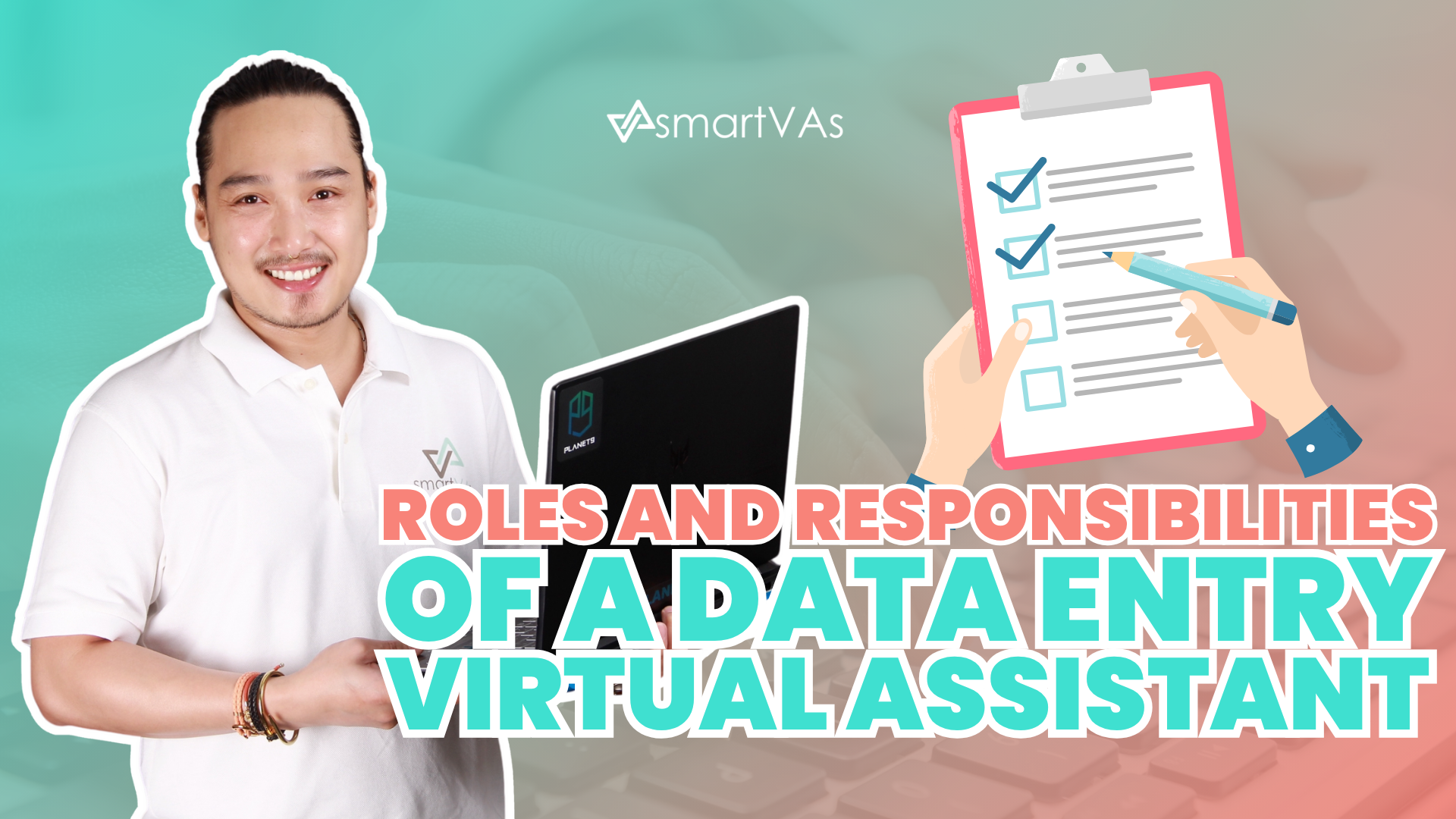Roles and Responsibilities of a Data Entry Virtual Assistant
In today’s fast-paced digital world, outsourcing tasks has become more than just a trend—it’s a strategic move embraced by startups, small businesses, and even large corporations. Among the many specialized virtual roles that contribute to business success, data entry virtual assistants have carved a crucial niche. These professionals offer support by handling data-heavy tasks that would otherwise bog down in-house staff, freeing up time for decision-making and growth initiatives.
Understanding the roles and responsibilities of a Data Entry Virtual Assistant is essential for anyone looking to boost productivity and streamline workflow. This article provides a complete breakdown of what data entry VAs do, their skills, and how they can help businesses stay organized and competitive in today’s data-driven environment.
What is a Data Entry Virtual Assistant?
A Data Entry Virtual Assistant (VA) is a remote administrative professional who is hired specifically to manage and process business data. Their main function is to enter, sort, update, and maintain digital records, but their duties often expand depending on the needs of the business.
Working remotely, these assistants connect via the internet and use cloud-based platforms to perform their tasks. They are hired on either a full-time, part-time, or per-project basis, making them incredibly flexible for businesses with changing demands.
Data entry VAs can be part of industries like eCommerce, real estate, healthcare, law, education, and finance—essentially, any field that relies heavily on data organization and maintenance.
Key Responsibilities of a Data Entry Virtual Assistant
The roles and responsibilities of a Data Entry Virtual Assistant are diverse, and they often go beyond simply typing data into a spreadsheet. Here’s a closer look at the essential tasks they handle:
Data Entry and Management
A data entry VA’s core duty is to input data—whether it’s customer orders, financial transactions, leads from marketing campaigns, or internal documentation—into relevant systems with precision and speed.
Database Updating and Maintenance
Over time, databases can become cluttered with outdated or duplicated information. VAs maintain data hygiene by regularly updating records, eliminating errors, and making sure the systems reflect the most current data.
Document Preparation
From invoices and reports to formatted presentation slides, they prepare various business documents using tools like MS Word, Excel, or Google Docs. Some also assist with document standardization.
Data Verification
Ensuring accuracy is a high priority. VAs often cross-reference data sources to catch and correct inconsistencies, helping to reduce costly errors before they spread across systems.
Email and Contact List Management
They can manage and maintain mailing lists, update contact databases, and clean up bounced or inactive addresses to ensure more efficient outreach.
Transcription and Conversion
Whether it’s transcribing meeting notes, converting scanned documents to editable files, or organizing handwritten notes into digital formats, this is a frequently requested task.
Internet Research and Data Mining
Many VAs also take on simple research tasks, like gathering contact details, collecting competitor pricing, or building lead lists—all while ensuring the accuracy of the data they collect.
Essential Skills and Qualities of a Data Entry Virtual Assistant
Because accuracy and speed are vital, not just anyone is suited for data entry work. Here are the skills that make someone successful in this role:
Attention to Detail
This role demands careful review and minimal room for error. Whether entering figures or names, data must be accurate to avoid major consequences down the line.
Fast and Accurate Typing
Typing speed isn’t everything, but a good VA should type at least 60–70 words per minute with a high degree of accuracy to be efficient.
Tech Proficiency
They should be familiar with popular platforms like Excel, Google Sheets, QuickBooks, Airtable, Trello, or specialized industry software. Knowing how to use shortcuts and formulas is a big plus.
Strong Time Management
Data entry may seem simple, but it often involves tight deadlines and repetitive work. A VA who can stick to schedules and deliver quality work under pressure adds serious value.
Communication Skills
Despite working remotely, communication is key. Whether providing updates or clarifying instructions, a VA should communicate professionally and clearly.
Initiative and Resourcefulness
When errors or missing data appear, a great VA doesn't just ignore them—they take the initiative to resolve or report issues appropriately.
Benefits of Hiring a Data Entry Virtual Assistant
Outsourcing to a data entry VA provides multiple benefits beyond just task completion.
Cost-Efficiency
Hiring a full-time employee can cost significantly more when you consider taxes, office space, and benefits. VAs allow you to get the work done at a fraction of the cost, without sacrificing quality.
Time-Saving
Delegating repetitive tasks means your core team can spend more time on what really matters—strategy, innovation, and customer relationships.
Global Talent Access
Hiring virtually gives you access to skilled professionals from around the world, often with specialized experience in your industry or tools.
Better Focus and Workflow
With a VA handling data upkeep, your internal team enjoys fewer distractions and better focus. This can improve overall workflow and project outcomes.
Business Scalability
Need help during peak seasons or for large campaigns? VAs allow you to quickly scale your operations without long-term commitments.
Top Data Entry Tasks to Delegate to a Virtual Assistant
Here are the top types of tasks businesses typically outsource to a data entry VA:
Recording daily sales and expenses
Updating customer information in CRM systems
Entering product details into eCommerce platforms
Data collection from web forms or email surveys
Transcription of audio or video recordings
Inventory data tracking and reconciliation
Compiling competitor research or customer demographics
Inputting data from scanned or handwritten documents
Generating periodic data reports and summaries
These delegated tasks ensure your data remains clean, updated, and actionable—without overloading your core team.
Conclusion: A Smarter Way to Work with Smart Virtual Assistants
In a digital era where data powers nearly every decision, having clean, organized, and up-to-date information is vital to your business’s success. That’s why hiring a Data Entry Virtual Assistant isn’t just helpful—it’s strategic. These professionals streamline operations by taking charge of time-consuming, detail-driven tasks, giving you and your team the freedom to focus on what truly drives growth.
The roles and responsibilities of a Data Entry Virtual Assistant extend far beyond simply entering numbers on a spreadsheet. They help maintain your operational flow, reduce errors, support business intelligence, and ultimately, increase efficiency across the board.
And with the rise of Smart Virtual Assistants (SmartVA), the capabilities go even further. Today’s virtual assistants are tech-savvy, adaptive, and equipped with multi-disciplinary skills. At SmartVA, we go beyond data entry. We provide a full suite of virtual support services tailored for entrepreneurs, startups, and growing businesses—web development, graphic design, SEO, content writing, video editing, administrative tasks, and much more.
Whether you need a dedicated assistant for one task or a team to support multiple areas of your business, our experienced virtual professionals are ready to help you scale smarter, not harder. With SmartVA, you’re not just hiring help—you’re investing in reliable, high-quality support that grows with you. Book a call now!
Frequently Related Questions:
How does a Data Entry Virtual Assistant ensure data accuracy?
Experienced VAs use checklists, validation tools, and manual cross-checking to ensure the accuracy of their work. They may also employ conditional formatting and automated formulas in spreadsheets to flag inconsistencies.
Is it safe to share sensitive business data with a Virtual Assistant?
Yes, provided proper safeguards are in place. Using secure platforms like Google Workspace, Dropbox Business, or encrypted drives ensures that your data stays protected. Non-disclosure agreements (NDAs) and access restrictions add extra security layers.
How can I measure the performance of my Data Entry Virtual Assistant?
You can track metrics like turnaround time, error rate, task completion rate, and overall responsiveness. Some businesses also perform monthly audits or reviews to evaluate performance and improve workflows.
Pro Tip: Hiring a Data Entry VA is more than a cost-saving decision—it’s a growth strategy. With the right person in this role, you’ll notice better organization, faster turnaround, and fewer data headaches.






